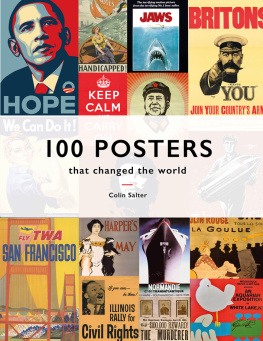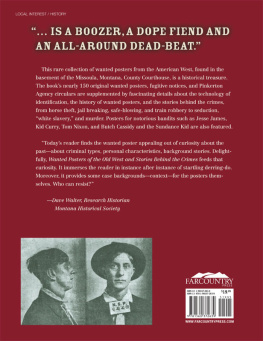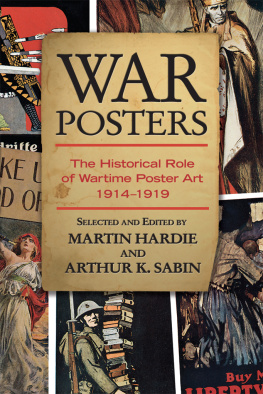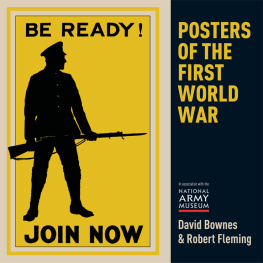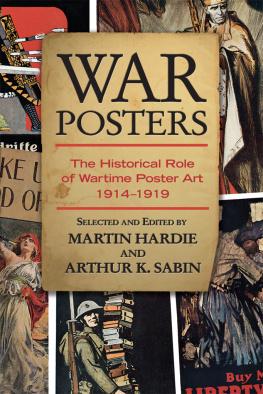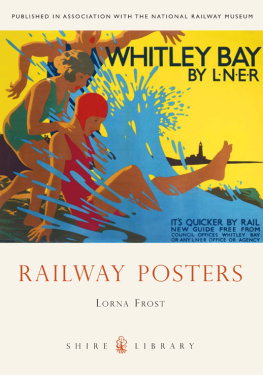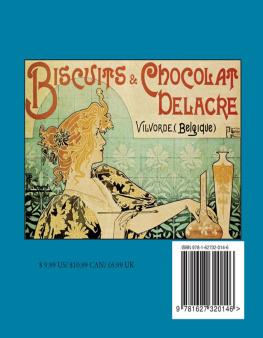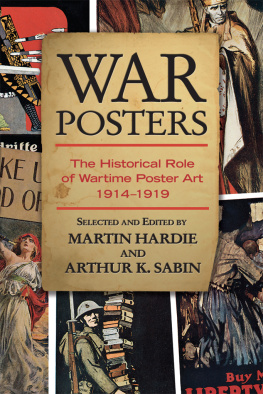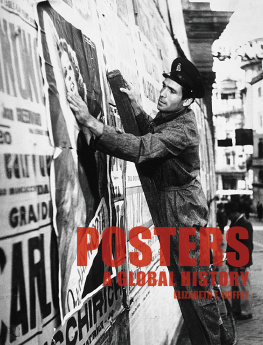Contents
Guide
100 POSTERS
that changed the world


100 POSTERS
that changed the world

Colin Salter

Contents

Henry George Gawthorn designed a number of classic travel posters for the LNER in the 1920s and 1930s, including this one of the Forth Rail Bridge. Swann Auction Galleries in New York, who specialize in auctions of printed material, sold an original Clacton-on-Sea Gawthorn poster for $5,000 in 2014.
Introduction
We cant say definitively who hung the first poster, or when. Was it an ancient Roman entrepreneur announcing the attractions at the local amphitheatre? Or an ancient Greek democrat appealing for your vote? One thing is certain: they were trying to draw eyes to their message.
I n a world with myriad media through which to attract attention, the poster has always had distinct advantages. It can be placed exactly where its intended audience will see it. Newspapers and television, for example, reach a public defined by the reputation of the publication or the programme which the TV channel is broadcasting not necessarily the same demographic or even the same geographical area in which you want to sell your product. A poster for a touring circus, however, will only be put up in the town to which the Big Top is coming. A health campaign announcement can be displayed where it needs to be seen; so abstinence posters were placed outside bars, and anti-drug campaigns were promoted in senior schools and colleges. Posters can hit their intended targets.

Haddon Sundbloms jolly, rubescent Santa Claus in his traditional red robe enjoying, The pause that refreshes in the 1950s. Many believe it was Coca-Cola who gave Santa his red attire for its advertising campaigns, but a quick look at the cover of Puck magazine from 1896 quickly dispels that myth.
LOOK AT ME!
Every posters principle message is Look at me! Until it has caught your eye, nothing else matters. Only once it has grabbed attention can it proceed to sell you whatever it is selling ideas or goods, magazines or bicycles, a plea for morality or a temptation to sin. Communist poet, playwright and poster designer Vladimir Mayakovsky said that if a poster could not bring a running man to a halt it had not done its job.
Just as the invention of printing meant you didnt have to draw every poster by hand, so the arrival of lithography transformed the art and ushered in the Golden Age of the Poster. From 1880 to 1940, poster designers were liberated by the new possibilities of full colour reproduction to create the most beautiful combinations of art and commerce.
The period coincided with the Art Nouveau and Art Deco movements when first the forms of nature and then those of engineering were applied to design on all fronts architecture, household objects, even forms of transport. Posters reflected these cultural trends and in some cases, for example the world of French cabaret clubs, led them. Art Nouveau gave us sinuous curves, evocative of absinthe-induced dreams and spinning Parisian dancers. Art Deco gave us streamlining, and the travel posters of the 1920s and 1930s offered a world of unparalleled glamour and speed by trans-European train or transatlantic liner.
Posters have always sold ideas as well as the goods and services they advertise. Those early bicycle posters werent only offering you an expensive contraption; buy a bicycle and you would be buying modernity the future, as Paul Newman briefly believed in the film Butch Cassidy and the Sundance Kid before returning to his slower but more dependable horse. Bicycles were the latest craze as the real Cassidy launched his crime spree.

Posters regularly appeared to advertise American journals, such as the debut of the short-lived Weekly Innocent Owl in 1867. However the market took a quantum leap forward when Harpers magazine used a colour poster by Edward Penfield to promote their edition for April 1893. The approach was quickly copied by rival publishers and the monthly promotional poster quickly became collectors items.
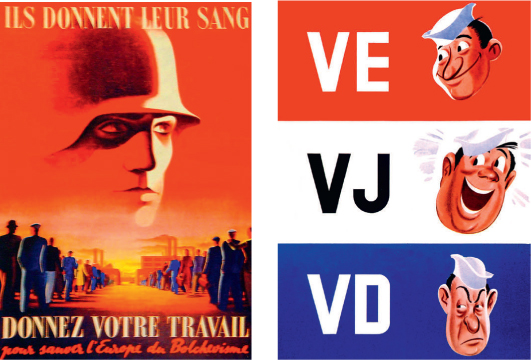
Two very different poster messages from World War II. In Nazi-occupied France the German propagandists were keen to persuade the French population to work in armament factories both at home and in Germany. The poster reads: They give their blood. Give your work.
After victories in Europe and Japan, and with millions of men celebrating the fact that theyd got through the war unscathed, the US Navy were keen that their returning sailors didnt bring home unwelcome souvenirs. The Army and Navy produced many different VD posters to combat the upsurge in cases.

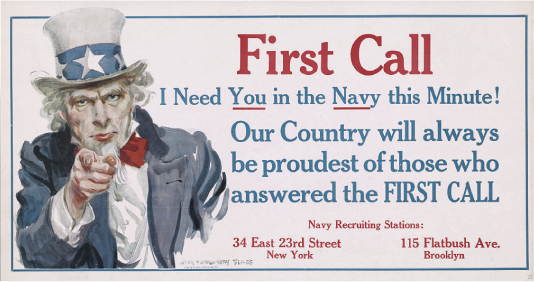
Uncle Sam had been a popular character in the US for over a century, but he was defined once and for all by James Montgomery Flaggs recruitment poster for World War I. Imitating the pose struck by Lord Kitchener in 1914, Flaggs portrait of Uncle Sam first appeared on the cover of Leslies Illustrated Magazine in 1916, asking what the US was doing to prepare for conflict. Like many classic posters it has been subverted to portray a whole range of different messages since, such as helping to re-elect Franklin D. Roosevelt, or to draw attention to the war in Vietnam.
KEEP CALM AND CARRY ON
Sometimes, however, the idea is everything. Ideology comes to the fore in times of war; and if truth is the first casualty of war, propaganda is the first lie. George Washingtons recruitment poster for the Continental Army promised the opportunity to travel across the country, but did not mention the high risk of death in the process. Propaganda posters are a vital weapon of war. Governments use them to justify the conflict to their citizens; to reassure them that the home side is winning; and to enlist the countrys civilians in the war effort. You could do your bit by saving materials and growing your own food, even if you were too young or too old for military action.
The first job in war is to make your enemy the faceless villain of the piece. Its not always an easy thing to do. Before both World Wars, Britain and Germany had close ties and the countries were connected by many individual friendships. Adolf Hitler planned to put the abdicated King Edward VIII, who admired him, back on the British throne. After Pearl Harbor, the demonization of Japanese people was scaled down in Hawaii, where they made up a third of the population. Nevertheless soldiers must be taught to hate, and propaganda posters routinely depict the enemy as a monster ravaging daughters and murdering your sons.

